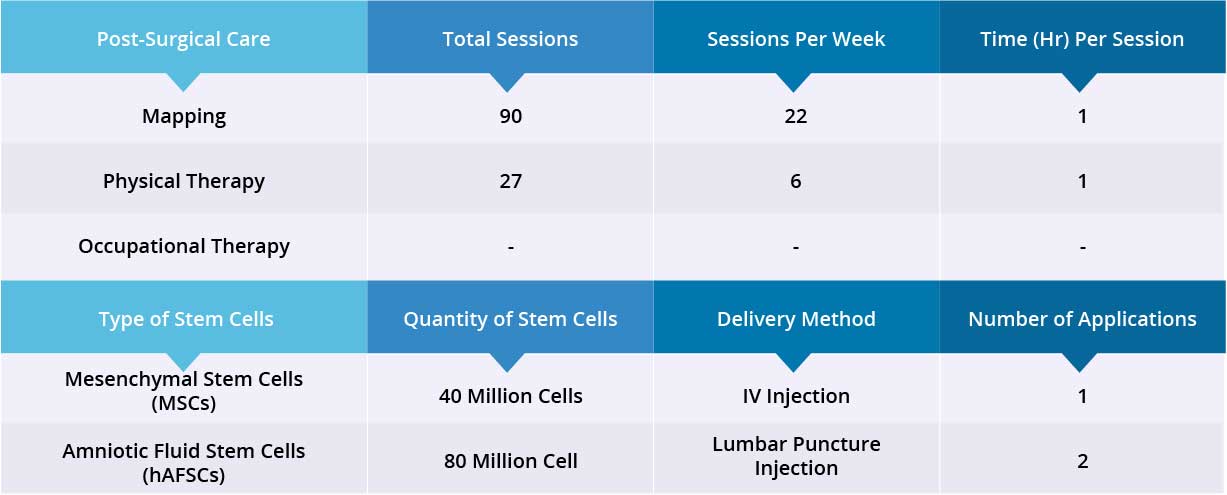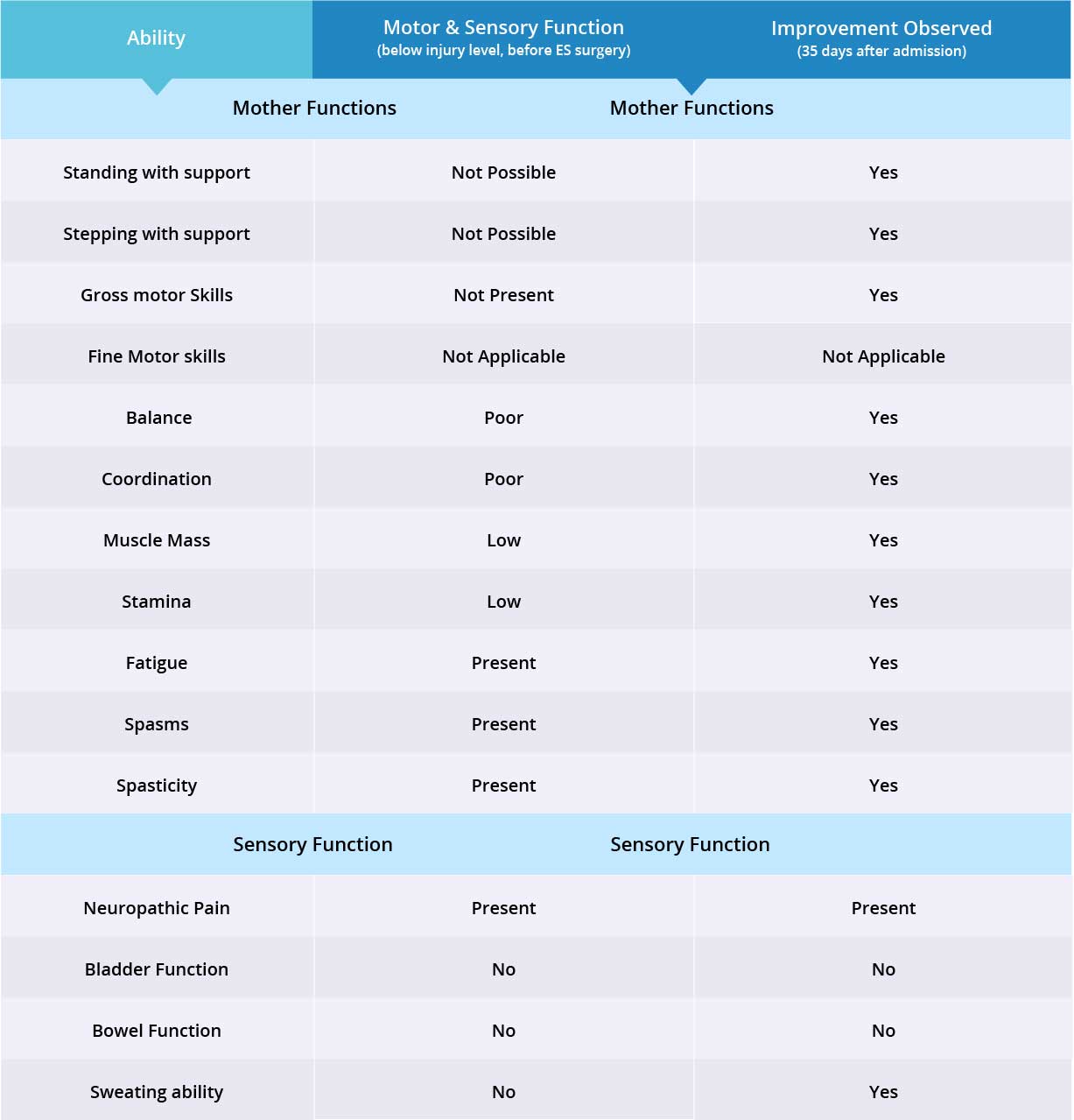This website uses cookies so that we can provide you with the best user experience possible. Cookie information is stored in your browser and performs functions such as recognising you when you return to our website and helping our team to understand which sections of the website you find most interesting and useful.
Case Study
Patient E,
Female, Italian
Table of Contents
Patient Overview
Age at time of treatment: 36 – 45
Injury Level: T7
Treatment Received: Stem Cells, Epidural Stimulation
Location of Treatment: Thailand
Time between injury and treatment: —
Date of Surgery: 07/07/2018
Date of Discharge: 09/08/2018
Condition on Admission
Patient sustained fracture and bursting of T7 with 12mm rear wall displacement. Her MRI scan showed T7 fracture-dislocation with subsequent spinal cord contusion and myelomalacia (spinal cord softening). Patient has complete paraplegia with no residual motor or sensory functions below the injury level, but is independent in her daily activities. Patient suffers from neurogenic bladder and bowel.
Previous Therapies & Treatments
Patient has participated in various rehabilitation programs, including ones for strengthening her upper extremities and improving ambulation and trunk control.
Patient sustained fracture and bursting of T7 with 12mm rear wall displacement. Her MRI scan showed T7 fracture-dislocation with subsequent spinal cord contusion and myelomalacia (spinal cord softening). Patient has complete paraplegia with no residual motor or sensory functions below the injury level, but is independent in her daily activities. Patient suffers from neurogenic bladder and bowel.
Verita Neuro Treatment Received
After a spinal MRI scan and comprehensive blood work, patient underwent laminectomy and implantation of the epidural stimulation device on July 7, 2018. The device is the ‘Medtronic Restore Advance 16-electrode MRI Compatible Device’. The surgery was completed without issue and no complications were reported during the postoperative hospital stay. Surgical wounds healed normally and no spinal cord or superficial wound infection was reported.
After epidural stimulation surgery, patient received 90 mapping sessions and 27 physical therapy sessions. Patient also received 120 million Stem cells, 40 million Mesenchymal Stem cells and 80 million Amniotic Fluid Stem Cells (hAFSCs) through one IV injection and two lumbar puncture injections, respectively. All three applications went well without adverse effects and no short-term or acute complications have been reported.
Mapping began two days after surgery and good voluntary muscle contraction was observed. Therapy was halted by a severe urinary tract infection and recurrent fever for which the patient was treated with a prolonged course of IV antibiotics. She completely recovered towards the end of the post-surgical therapy (35 days).
After recovery, new mapping sessions were begun and eventually voluntary muscle control started to come back, with standing and stepping training during the last week of the treatment.

Results
- Motor Functions
- Sensory Functions
- Autonomic Functions
Patient has good static sitting balance, but dynamic sitting balance requires minimal assistance. Patient has good static and dynamic standing balance with minimal support. Muscle mass has increased and endurance has improved. Patient is able to stand at the parallel bar and is able to lock both knees, but her left knee locks better than the right. Patient has good trunk control and is able to lock her hips while standing and bears weight equally on both legs.
Patient uses a walking frame when taking assisted steps, but requires assistance with foot placement and is unable to lock her knees. Patient is able to coordinate both legs during her stepping exercises.
There was no noticeable improvement to her neurogenic bladder and bowel. Patient received stem cell injections, therefore we expect to see results in these areas within 3 months time.

Improvements are monitored in 15 targeted areas: 11 Motor areas and 4 Sensory areas. However, the number of targeted areas may vary depending on patient’s condition prior to admission. If patient does not experience symptoms in certain Motor/Sensory functions, or is not impaired in a specific targeted area prior to surgery, it is excluded from the report (Not Applicable). If there is progress in any given area — either mild, moderate, or significant — it is measured and reported as positive (“Yes”). No improvement, the existence of pain or spasms, or an inability to perform a measured function is reported as “No”.
Results Interpretation
As the patient is paraplegic with normal upper limb function, improvement in fine motor skills was considered “not applicable”. Motor function improved in 10 out of 10 targeted areas when the epidural stimulation device was switched on. Patient has not experienced any changes in sensory function, but more feedback will be collected after 3 months to note any improvements from stem cell treatment. Improvements were recorded in 10 out of 14 targeted motor and sensory function areas.

